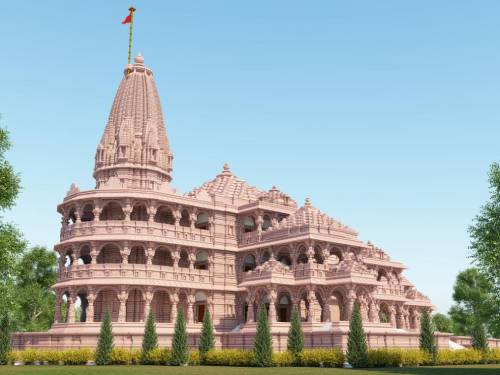Live Classes

The BJP’s call to ‘free Hindu temples’ is logically far-fetched, practically unviable and, if heeded, will stall social reforms
In the last few years, there has been an orchestrated campaign by the BJP to “free Hindu temples” from the control of the government. Karnataka Chief Minister Basavaraj Bommai even announced that a law would be introduced in this regard. In nonBJP ruled States, the Rashtriya Swayamsevak Sangh has spearheaded legal challenges to statutes such as the Tamil Nadu Hindu Religious and Charitable Endowments (TNHR&CE) Act, 1959. Viewed from any perspective, all such efforts are on a weak legal footing and constitutionally problematic.
Legislative History
One of the earliest efforts by an elected government to regulate temples can be traced back to 1927 when the Justice Party enacted the Madras Hindu Religious Endowments Act, 1927. In 1950, the Law Commission of India suggested that a law be passed to check the misuse of funds and properties of temples. The TNHR&CE Act was enacted, but its constitutional validity was challenged before the Supreme Court. In the landmark Shirur Mutt case, the Court upheld the overall law, though it struck down some provisions. A revised TNHR&CE Act was legislated in 1959 and holds the field today.
Dr. C. P. Ramaswami Aiyar Commission
In 1960, the Government of India constituted the Hindu Religious Endowments Commission chaired by Dr. C. P. Ramaswami Aiyar to enquire into matters connected with Hindu Public Religious Endowments. The Commission declared that government control over temples was essential to prevent maladministration and observed that the absence of enactments regulating the administration of Hindu temples in some States led to “general apathy and consequent neglect of the institutions”. As such, both constitutional courts and expert bodies have backed government regulatory control over temple administration.
Early interventions of the Dravidian movement ensured that people belonging to backward classes were given the right to walk on the roads adjoining the Shiva temple in Vaikom which resulted in the promulgation of the Travancore Temple Entry Proclamation of 1936. In the subsequent decades, Kerala and Tamil Nadu, especially, have seen significant reforms within the Hindu temples that have culminated in the appointment of persons belonging to backward classes as archakas (priests) through government action. In August In 2021, the DMK made 208 appointments under the TNHR&CE Act which included archakas from all castes and a woman odhuvar (singer of hymns).
Contrary to the rightwing propaganda that the Dravidian movement is ‘antiHindu’, the TNHR&CE Department has been carrying out its duties efficiently and contributed to the development and betterment of temples. The Integrated Temple Management System digitises temple records with the objective of ensuring transparency and accountability in temple administration. Other initiatives such as setting up institutes for training archakas, converting jewelry given as donations into gold bars, providing monthly incentives to priests in nearly 13,000 temples, deploying 10,000 security guards in temples, and expediting evictions in cases of land encroachments have been taken up by the Department.
The BJP’s Promise
In 2021, the BJP promised to hand temples over to “a separate board comprising Hindu scholars and saints”. The premise suffers from legal, moral and practical difficulties. There is no explanation as to how temples are to be handed over from the state to a private group. This would also mean giving up public accountability and transparency as writ petitions and Right to Information applications cannot be filed. Importantly, such a move would stall social reforms that have been carried out by the state
Fundamental Rights and Religious Freedom
Much of the campaign to “free temples” feeds off the misconception that the control of temples by the state is against the principle of secularism. However, the fundamentals of Indian secularism are different from those of western jurisdictions where state and church are totally separate. In India, the freedom to freely profess, practice, and propagate religion (Article 25 of the Constitution) is subject to the power of the state to make laws on the secular aspects of religion.
The framers of our Constitution conferred powers to the state to exercise limited control over religious affairs by virtue of Article 25(2). Dr. B.R. Ambedkar observed that religion should not be given a “vast, expansive jurisdiction so as to cover the whole of life and to prevent the legislature from encroaching upon that field” and that the liberty we have is “to reform our social system, which is so full of inequities,... inequalities, discriminations... which conflict with our fundamental rights.”
Over the years, the Supreme Court has held in a number of cases that the Constitution only protects practices that are essentially religious and does not preclude the power of the state to make laws on the secular, economic, political, or financial aspects of religion. By virtue of such judicial precedents, governments have undertaken significant reforms. Supervisory state control over temples to the extent that it does not affect essential religious practices must be regarded as an inviolable aspect of the basic structure of the Constitution.
The Supreme Court has upheld laws such as the TNHR&CE Act and found them to operate within the constitutionally permissible framework of regulating the secular aspects of the Hindu religion. The framers of our Constitution emphasized the need for social reform in religion. And so, any effort to “free Hindu temples” can only be regarded as an attempt to redefine secularism and ultimately rewrite the fundamentals of our Constitution.
Tamil Nadu
Karnataka
Arguments Against The Law
Support For The Law